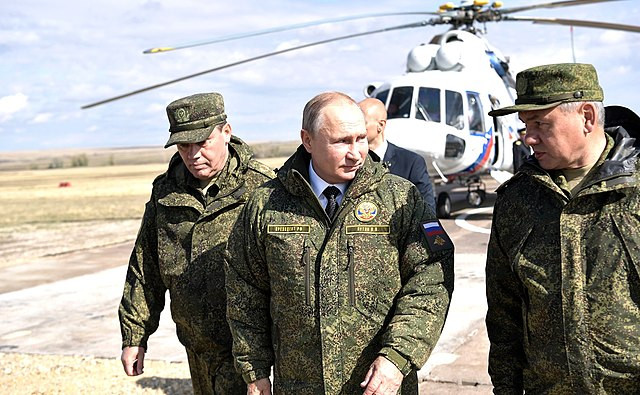In a rare high-level communication, Russian Chief of the General Staff Gen. Valery Gerasimov recently informed U.S. Chairman of the Joint Chiefs of Staff Gen. Charles Q. Brown about Russia's plans to test hypersonic missiles in the eastern Mediterranean Sea. The call, which took place on November 27, was initiated by Gerasimov, who also discussed how to avoid escalation in the ongoing conflict in Ukraine, according to U.S. officials and multiple reports.
The timing of the call and subsequent missile tests coincided with heightened tensions between Moscow and Washington, as Russia responded to the U.S. decision to allow Ukraine to use long-range Army Tactical Missile Systems (ATACMS) against targets within Russia. According to The New York Times, Gerasimov revealed that a ballistic missile strike launched against Ukraine had been planned well before Washington's approval of ATACMS.
A spokesperson for Gen. Brown, Capt. Jereal Dorsey, confirmed the communication, stating that "the leaders discussed a number of global and regional security issues, to include the ongoing conflict in Ukraine." Capt. Dorsey also noted that the Russian general requested the U.S. "not proactively announce" the call, which remained undisclosed until media outlets reported on it days later.
During the call, Gerasimov reportedly cautioned Gen. Brown about upcoming hypersonic missile tests in the Mediterranean. According to ABC News, the warning included advice for U.S. Navy ships in the region to avoid the target area. The eastern Mediterranean, where the tests occurred, is strategically significant, with U.S. forces maintaining a robust presence, including amphibious ships and destroyers equipped with missile defense systems for Israel.
The Russian defense ministry subsequently confirmed the missile launches, stating that frigates Admiral Gorshkov and Admiral Golovko fired Zircon hypersonic missiles, while the submarine Novorossiysk launched a Kalibr cruise missile. An Onyx cruise missile was also launched from the Mediterranean coast. The ministry emphasized that all designated targets were struck directly and described the exercises as compliant with international norms.
The tests came amid other military maneuvers by Russia in the region. Over 1,000 troops, ten ships, and 24 aircraft participated in exercises between December 1 and 3. Russia has maintained a strategic naval base in Tartus, Syria, from which it has supported Syrian President Bashar al-Assad during ongoing regional instability.
The context surrounding the missile launches remains contentious. While Russian President Vladimir Putin suggested the missile strike in Ukraine was a response to U.S. decisions, Gerasimov's comments reportedly contradicted this narrative. U.S. officials told The New York Times that the strike had been planned "long before" Ukraine's use of ATACMS was approved.
Tensions have been further inflamed by Russia's revised nuclear doctrine, formalized just days before the strike. Putin's policy lowers the threshold for using nuclear weapons, prompting concern among Western officials. The missile test announcements, combined with these policy changes, have fueled speculation about Moscow's intentions.
Meanwhile, the call between Brown and Gerasimov, their first since Brown became chairman of the Joint Chiefs of Staff, underscored the precarious nature of U.S.-Russia relations. According to ABC News, discussions also touched on "how to avoid miscalculation between the U.S. and Russia."
Both the Pentagon and the Russian defense ministry have refrained from providing additional details on the call or subsequent developments. As tensions remain high, observers view the communication as a necessary, albeit limited, channel to reduce the risk of direct confrontation between the two nuclear powers.






